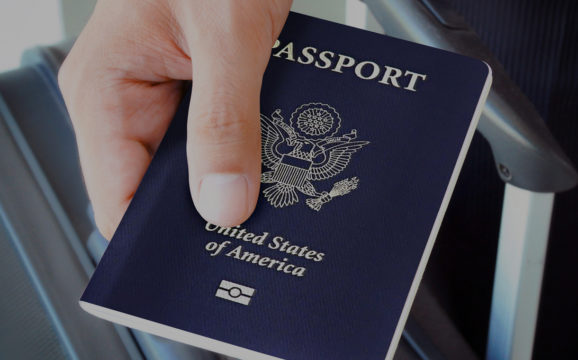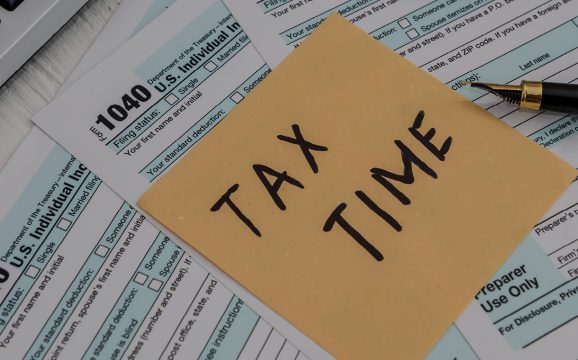COVID-19 in the U.S and its Effect of Taxes, Filings and Grants | Aharonof U.S Tax Advisory
The coronavirus world pandemic has deeply affected the entire world, and the United States is no exception.
Its repercussions are immeasurable – from a social, financial and of course taxation point of view.
Filing and Payment Deadlines Postponed
On March 18, 2020, the United States Secretary of the Treasury, Steven Mnuchin, decided as an initial response to postpone the filing and payment deadlines in the U.S from April 15 to July 15, while the deadline for paying tax advances for the first quarter of 2020 was postponed to the same date.
A few days later, on March 21, the IRS (the U.S Internal Revenue Service) adopted this decision and began implementing it.
According to the IRS’s announcement, taxpayers in the U.S can file and pay their taxes on July 15 instead of April 15, without incurring any penalties or interest.
The postponement is relevant to all taxpayers including individuals, corporations, trusts, estates and anyone unincorporated such as sole proprietors who are subject to pay U.S social security.
One should note that the IRS’s announcement also affects the U.S Social Security payment date since it is paid together with the income tax under the annual tax return.
How to request a filing extension?
There is no need to file a request to receive this extension, it is given automatically.
What should I do if I need another extension on the new deadline?{
A taxpayer who needs an additional extension on the new July 15 filing deadline, could do so in the ordinary, customary manner (however this does not extend the payment deadline), meaning individuals should use Form 4868 and corporations should use Form 7004.
Individuals and C-Corps could receive an extension until October 15, while other corporations such as LLCs or S-Corps could receive an extension until September 15.
Quicker than usual tax refunds
However, the IRS urges U.S taxpayers, especially those entitled to a tax refund, to file their tax returns as soon as possible and electronically (the preferred method).
The reason being that despite the fact that the IRS is working in a limited capacity due to the coronavirus, it declared that tax returns for individuals and corporations will be processed quicker than usual, meaning less than the usual 21 days when filing electronically.
The Stafford Act as a Safety Net
This announcement was given after Trump declared a national state of emergency over COVID-19 under the Stafford Act.
This Act is a 1988 United States federal law designed to enable the Federal Government to funnel vast sums of money and means of assistance during federally declared natural disasters to help States and local governments in the U.S handle these situations.
This Act is relevant today as well, in the coronavirus world pandemic and especially in the U.S.
Complex Times Require Flexibility
As the crisis unfolded, the U.S Congress and Senate began working on various joint bipartisan laws to help the U.S economy deal with this crisis, and on Friday March 28, President Trump signed the Act into law.
The Act is called the CARES Act – Coronavirus, Aid, Relief and Economic Security.
Following are the key principles of the Act regarding U.S citizens living offshore:
Financial aid to any U.S citizen, anywhere around the world
The CARES Act provides for a one-time Economic Impact Payment of $1,200 per adult ($2,400 per couple of U.S citizens) and $500 per child who is a U.S citizen.
Adults
The Economic Impact Payment will be granted to any adult whose income is less than the following income threshold: (Adjusted gross income (AGI)
1. Single/divorced/married filing separately – $75,000 to $99,000.
2. Married filing joint – $150,000 to $198,000..
3. “Head of household” – $112,500 to $136,500..
For filers with income above these amounts, the payment amount is reduced by $5 for each $100 above the thresholds, up to the cap sum of the payment, above which their EIP is completely phased out and they are not eligible for any payment.
Basic criteria for receiving an Economic Impact Payment (EIP):
1. U.S citizen.
2. Has a U.S Social Security Number.
3. No need for ordinary income such as other credits.
4. Income qualifications.
Minors
A Qualifying Child’s eligibility for an EIP depends on the following main criteria:
1. The minor is a U.S citizen
2. The minor lived with his parents more than 50% of the time during that tax yea
3. The minor was more than 50% financed by his parents during that tax year.
4. The minor was less than 17 years old during that tax year.
5. If the minor’s parents are eligible for an EIP according to an adult’s criteria as detailed above.
Additional Important Information
For income qualification purposes, the IRS checks the individual’s income in 2018-2019, however the final calculation is based on his income in 2020, while of these years, the year with the lowest income is the determining measure.
And so even if you are not eligible based on 2018, you could still receive it based on 2019-2020.
The Act was designed so that in the event that income in 2020 was higher than in 2018-2019, you will not be required to return any part of an EIP that was granted based on previous years.
Non-filers are also eligible for EIP
The IRS has opened a registration portal for people whose income did not reach the minimum filing threshold and who didn’t file a tax return in 2018-2019 as a result, so that they could receive payment.
If you have an account in the U.S we recommend filling out the details, if you have none, a check will be sent to the address specified in the portal.
To enter details into the IRS’ portal, click on the following link:
https://www.irs.gov/coronavirus/non-filers-enter-payment-info-here
Recipients of U.S Social Security who had not yet filed their tax returns will receive an EIP automatically.
According to the new Act, the EIP will be deposited automatically into the bank account into which the tax refund was deposited in the last tax return, or to your address according to the IRS’s records based on your 2019 tax return (if no tax return was filed in 2018).
You could update your U.S bank account details to receive payment (if not yet received) and check its status at the following link
https://www.irs.gov/coronavirus/get-my-payment
(After entering the IRS website using the above link, press “Get My Payment”
The government has already started giving out payments and is continuing to do so, and it has committed to complete its distribution by the end of 2020.
U.S citizens will soon receive letters (to the most updated address according to the IRS’ records) with more information regarding the payment.
Please note!
If you’ve changed address you need to fill out Form 8822 as soon as possible and send it to the IRS or file a tax return for 2019 with your current address as soon as possible.
Tax Relief for the Self-Employed
Postponing Social Security Payments
A self employed taxpayer (who files Schedule C) can postpone his U.S Employer’s Social Security payments in the 2020 tax return – half of which will be postponed to the end of 2021 – and the other half to the end of 2022.
The tax relief is in respect of the relevant Social Security payments between March 27, 2020 and December 31, 2020.
Increased Acknowledgment of Donations
In 2020, taxpayers who do not itemize deductions are allowed up to $300 in charitable donation deductions.
This benefit may continue to apply in coming years as well.
The Act allows taxpayers who itemize to make tax-deductible charitable contributions to offset all their donations in 2020 and accumulate any unused balance in the next five years.
This is in contrast to 2018, where charitable contributions were recognized only up to 60% of the taxpayer’s adjusted gross income (AGI).
Withdrawal from Retirement Plans
RMD Payments
Retirees who must withdraw Required Minimum Distribution (RMD) amounts from their retirement accounts every year from the age of 70½, aren’t required to do so in 2020, while a self-employed taxpayer who has already made withdrawals can return the funds into the account.
Early Withdrawal
In the event of proven damages caused by the Coronavirus such as in case of diagnosis, quarantine, adverse financial consequences on business and so forth, one can withdraw up to $100,000 as early withdrawal (before the age of 59½) from various retirement plans such as IRA, 401K etc., under the following terms:
– The 10% early withdrawal penalty will be waived
– The distribution can be taxed as income spread evenly over three years.
– You can pay back the amount you took out within three years, and it shall be credited to the principal amount and won’t be subject to tax.
We are there for you, through thick and thin
Our firm continues to provide our clients with continued services even throughout the COVID-19 crisis, filing for extensions and our clients’ annual U.S tax returns.
We are here to help you with anything you might need in connection with U.S taxation, to answer your questions and provide ongoing services.
For further details, please contact our offices and we will be happy to assist you.
This article uses the masculine form, but is of course addressed to all genders equally and without difference.
The above is not intended to convey or constitute tax advice or an opinion on any matter.
The above should not be applied in any manner to evade or defeat any penalty that may be imposed by the IRS or any other legal authority in the U.S or the payment thereof.



